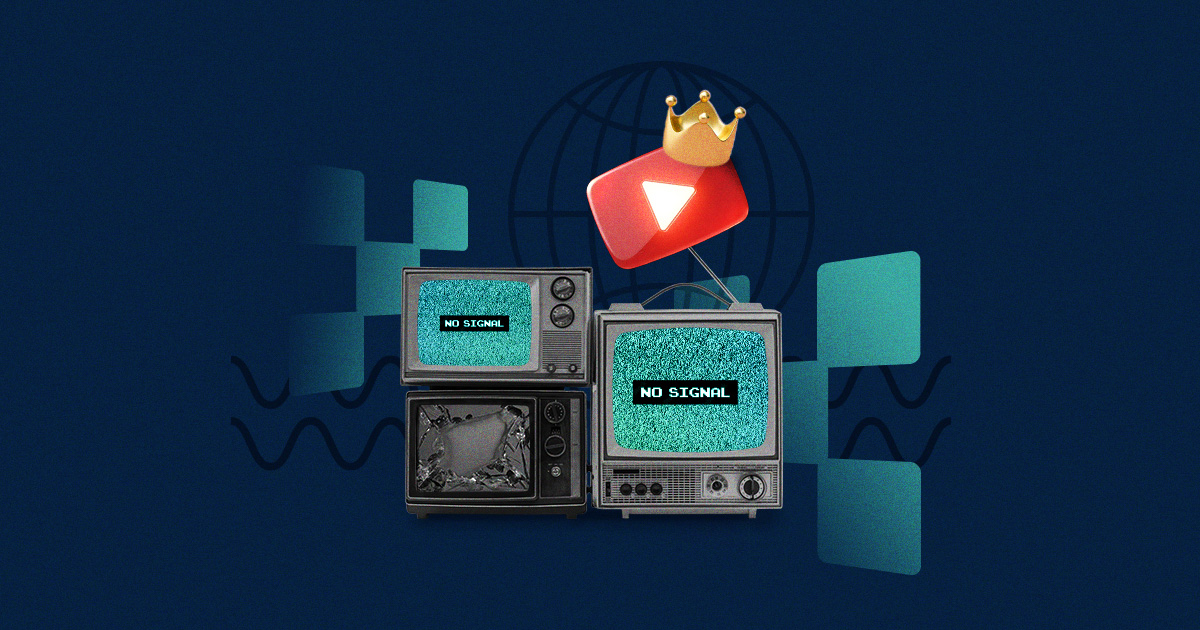
Picture this: you’re binge-scrolling one night, hoping to zone out for a while and decompress from your day at work, and all of a sudden, an ad for something you’re not even remotely interested in pops up, disrupting your experience.
It’s happened to all of us, and let’s be honest—it’s super annoying, and you probably scrolled right past it without giving it a thought.
If you’re part of Gen Z, it’s even more off-putting. Born in the age of the internet, Gen Z’s BS meter is constantly running, and they’re ultra-wary of companies using blatant marketing tactics to get their ads in front of them. Growing up with smartphones, social media, and instant access to information, Gen Z has developed a keen sense of what resonates with them and what feels forced.
The tricky thing is that although they’re not interested in content that feels intrusive, Gen Z actually wants to see content that’s personalized to them—they just don’t want it to feel like it’s an invasion of their privacy. Based on a 2021 study, 87% of Gen Zers want personalization from brands they like.
 Source: eMarketer
Source: eMarketer
Personalization Matters
Personalizing content for any generation, but especially Gen Z, is a tightrope act between creeping them out by over-personalizing and not personalizing enough, risking a poorly-performing campaign (and a loss in revenue). If your brand can walk the tightrope and deliver a campaign that’s perfectly balanced, you’ll create meaningful connections, enhance user experiences, and drive engagement and loyalty.
Personalization allows brands to connect with their Gen Z audience by:
- Building authentic connections. By crafting messages and content that resonates with their individuality, brands can create authentic connections that feel like genuine conversations rather than one-sided promotions.
- Standing out from other brands. Gen Z is bombarded with information everywhere they go. To cut through the noise, brands need to deliver messages that are relevant and valuable. Personalization allows brands to tailor their content to Gen Z's specific needs and interests, increasing the likelihood of capturing their attention.
- Enhancing user experiences. Gen Z values seamless experiences. A personalized marketing approach ensures that the content they receive aligns with their lifestyle.
- Empowering individuality. Personalized marketing speaks directly to Gen Z’s individuality. By delivering customized experiences, brands encourage Gen Z to express themselves, resulting in a stronger emotional connection.
The Best Personalization is Based on Data…
…and that data can and should go more in-depth into your audience. Personalization needs to be based on something, and the more you understand your audience, the easier it will be to connect with them. While you won’t use all the data you have on a target audience in a campaign, having a full picture of who you’re marketing to will be essential.
Utilizing market research, analyzing your competitors, and getting up-to-speed on emerging trends will help you better understand your target audience. Identifying content creators and influencers who are in your target audience can also help you get an idea of who they are. With this data, you’ll need to segment your target audience into several different profiles. Audience profiles differ from your target market. Your target market is anyone who would purchase your product or service. These individuals or businesses would all have different reasons for needing your product, different goals, and different challenges. Audience profiles are a bit more in-depth and are created by considering their demographic information, their goals, and where they consume content.
As big search engines and social media advertising platforms continue imposing restrictions on targeting (for example, Meta recently removed the ability to choose LGBTQ+ individuals as a target), one of the most meaningful ways you can build your audience profile is to not only understand their buying behaviors, but also have a well-rounded understanding of their lifestyles. For instance, if you’re selling beach toys, you’ll be able to find individuals who have recently purchased beach towels, beach umbrellas, or swimsuits. A better way to target those looking to buy beach toys is to understand who those people are and why they’re looking for these items in the first place. In our beach toy example, you might have an audience profile of millennial moms with young children. Based on research, we’d know that many of these moms are Taylor Swift fans, frequently go out for brunch, watch The Bachelor, and enjoy drinking wine. With this information, you can tailor your content in a way that really resonates with your audience.
Since we’re looking to target Gen Z, let’s build out a sample audience profile with a fictional brand selling yoga mats. On a broad scale, our target market would be adults who practice yoga or would be interested in it in the future, and our target audience would likely skew towards women who value health and are college graduates. For advertising purposes, we can develop an audience profile for a very specific segment of shoppers to ensure we are creating the right content and delivering it to the right audience to fully optimize our campaign.
Gen Z Women Who Practice Yoga
- Demographic information such as geography, age, education, occupation, and income.
- Age: 21-24 years old
- Gender: female
- Education: High School or Bachelor’s Degree
- Income: $40,000/year
- Marital Status: single
- Psychographic information of attributes related to interests, values, attitudes or beliefs, and lifestyle. Remember, this section should be the most customized for a specific profile.
- Interests: traveling, humor, unique food and cocktails, horoscopes, hot yoga and cycling classes, nightlife
- Lifestyles: keeps up with fashion trends (low-rise jeans are coming back!) and shops at both thrift stores and Urban Outfitters, health-conscious Whole Foods shopper, interested in vegetarian options (but also has a minor obsession with the local ice cream shop), uses a gratitude journal, attends Coachella every year (and shows up early to wait for Harry Styles), has a bi-weekly appointment at the nail salon (two coats of Funny Bunny), is a night owl, takes public transportation when it’s available, is considering purchasing a desk treadmill to stay active while working from home, has a fur baby
- Values: sustainability, inclusion, spending time with friends, feeling fulfilled, spending their free time enjoying unique and fun experiences and documenting them, health and wellness
- Goals, challenges, or pain points that your product or service can help with.
- Goals: stay fit, be part of a community of other yogis, become more flexible to soften stiff muscles, look and feel good in their skin, and prioritize mental health and mindfulness
- Pain Points: needs a yoga mat that is not only cushioned and non-slip (hot yoga attendees even more so) but that is aesthetic and represents their unique taste. May have a current yoga mat that needs to be replace
- Preferred channels and content types that your audience is on.
- Preferred Channels: YouTube, Instagram, TikTok, Snapchat
- Preferred Content Types: video, user-generated content, influencer marketing
- Buying behavior (make sure you consider seasonality as well!).
- Buying Behavior: likely to shop around for the best price for the value, open to and familiar with purchasing via social media, will likely be willing to invest in a high-end yoga mat knowing it will last for several years, interested in buying from well-known brands, place high importance on brand ethics and corporate responsibility.
Without identifying these audience profiles up front, your brand could potentially lose revenue by targeting the wrong people. By using audience profiles and basing them on existing data, you’ll optimize your campaign, potentially saving your company time, resources, and money.
Content That Resonates
Once you’ve developed your audience profile and are ready to launch your campaign, there are a few more ways to personalize your ads for Gen Z. Of course, your creative will need to be based on what you know about your audience.
Walking our fine line between over- and under-personalizing, creating the right content can make or break your campaign. It has to catch their eye, keep their attention, and, of course, lead them through the funnel into conversion. This is why segmenting your audience is one of the most important things you can do. Ads that really resonate have contextual relevance, meaning they can become part of the user experience rather than disrupt it.
Lofi Girl, an account on YouTube with over 13 million subscribers, live-streams instrumental music described as “beats to relax/study to” and features an animated girl writing in her notebook with her cat lounging in the window.
 Source: YouTube
Source: YouTube
Most ads that pop up before you can join the live stream are for chain restaurants, t-shirts, and furniture stores and look like typical ads that those brands created to be somewhat relevant for a large audience. Nissan took a different approach.
They developed an ad specifically for the Lofi Girl’s livestream video. Instead of trying to cast a wide net and target anyone who would buy a car, they developed content specific to Lofi Girl’s channel in an effort to relate to that particular audience.
 Source: YouTube
Source: YouTube
In fact, they created content so similar to Lofi Girl’s content that it’s gotten over 18 million views on YouTube, with many commenters noting that it’s the only ad they’ve ever watched all the way through. That’s a pretty amazing feat for any advertisement, let alone Nissan’s four hour version.
So, if your brand is looking at metrics and throwing dollars away to get the most impressions, it’s time to rethink your strategy. Your product or service isn’t for everyone, and it shouldn’t be. Instead, focus on targeting specific segments of your audience like Nissan did, do the research to truly understand them, and deliver content that they’ll like on the platforms they’re already spending time on.
Building a Campaign
Let’s circle back to our yoga mat example. We’ll utilize our data to create an ad that resonates with our Gen Z audience by personalizing:
- Content Type: Knowing that Gen Z favors video content, this campaign would likely perform well as a short-form video.
- Channel: We know that Gen Z’s favorite channels are YouTube, Snapchat, and TikTok. Since we’re going short-form, we’ll show our ad on TikTok.
- Ad Objective: Assuming we’ve done some brand awareness ads already, our objective for this campaign will be to convert viewers to purchase directly in our TikTok shop since we know that Gen Z is more likely to make a purchase this way.
- Audience: We’ll create a custom audience to ensure our ad is shown to our audience profile. We’ll narrow our audience down based on their basic demographics and, of course, their interests and behaviors.
- Content: Since Gen Z trusts influencers (more than 80% of Gen Z consumers have been influenced by social media when shopping), let’s incorporate some of those users to play off of that existing trust. We can identify influencers who are similar to our audience profile to create a video of them using the product; this way, it’ll feel less like an ad and more like part of the experience, similar to our Nissan example. Since yoga is only a piece of their lifestyle, a day-in-the-life video of the influencer would capture our target audience’s attention, resonate with them, and give a glimpse into other ways they can better their existing healthy habits. This type of content will help foster a sense of community around our brand and highlight it in an authentic way.
In a perfect world, the first iteration of our ad would hit all our goals, we’d sell out of yoga mats, and never have to make another ad again. However, the last piece of the advertising puzzle is to analyze, assess, tweak, and try again. Not every campaign will hit the nail on the head on the first try. It’s critical to make sure your ad is performing up to your goals, and, if it’s not, to find out why it’s not performing and fix what’s not working.
Typically, brands want to see reporting on an ad’s impressions and reach, clicks, click-through rate, conversions, and conversion rate. While these are all important metrics, impressions and reach only represent the number of people who saw the ad, but not how effective it was. Since we’re segmenting our users and delivering content to specific audience profiles, we’ll likely see fewer impressions and reach than from an ad targeting anyone and everyone—and no matter what your CMOl says, that’s okay. Our goal should be about creating content that resonates with an audience, not to “spray and pray,” targeting everyone and hoping that some of them convert.
Taking a look at the data, you’ll be able to identify a point of friction on a user’s journey to conversion, and revise and test as needed. A/B testing is a great way to see what edits are working and help optimize the campaign.
The Future of Personalization
As advertising platforms continue to pull back on their targeting options, brands need to get creative when it comes to the ways they can personalize their content. That’s why it’s important to identify not just the demographics you want to target, but their likes, lifestyles, and behaviors, and truly understand your audience. Getting into your audience’s mindset isn’t just beneficial for your paid media strategy; it’ll help you build brand equity, create a loyal following, and ultimately sell more products.
This is the second article in our series about marketing to Gen Z. Missed the first one? Check it out here.




